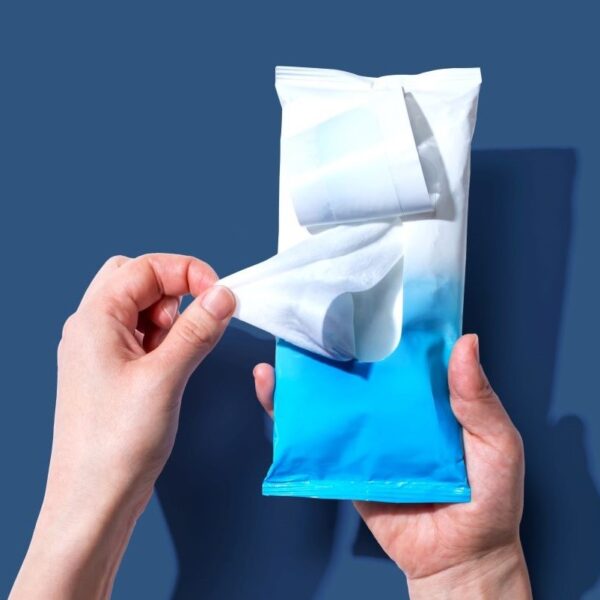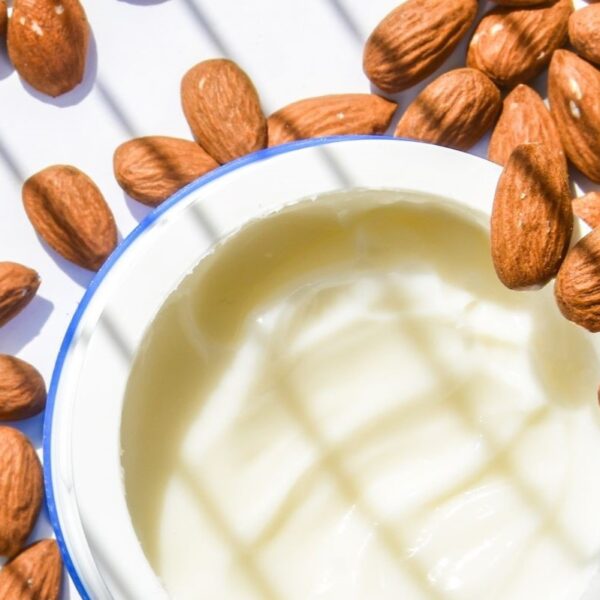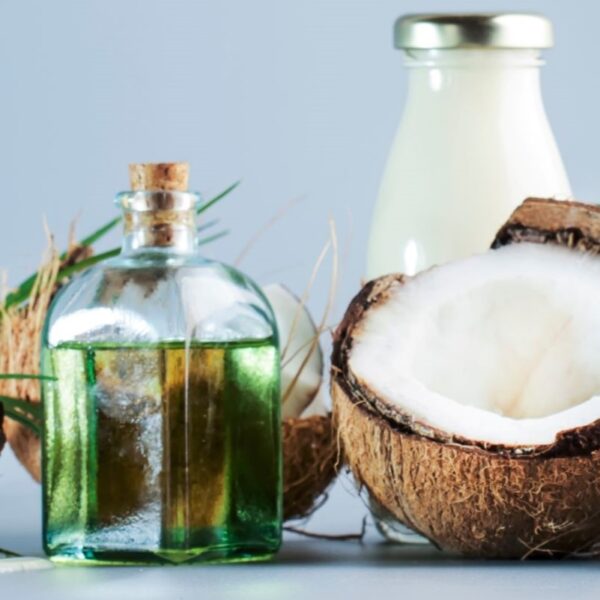Rosemary (Rosmarinus Officinalis) is an evergreen herb used for centuries in traditional medicine and culinary arts. Recently, rosemary extract has gained attention in the cosmetic industry because its antioxidant, antimicrobial, and astringent properties offer potential benefits for skin and hair. It is a natural ingredient with many possible uses in cosmetics and personal care products.
This article explores the use of rosemary extract in the production of cosmetics and personal care products, including its benefits, formulation examples, and regulatory guidelines.
What is Rosemary Extract?
Rosemary extract is obtained from the leaves of the plant Rosmarinus Officinalis. Extracts of rosemary are produced from dried rosemary leaves by acetone extraction, filtration, purification and solvent evaporation, followed by drying and sieving to obtain a fine powder or a liquid. Most industrial-scale processes use organic solvents such as acetone, hexane, or methanol to extract the critical antioxidant molecules from the leaves.
Due to an increasing trend towards natural products and certifications, many of the listed solvents are being replaced by supercritical carbon dioxide because of their acceptability as an extraction solvent for naturally processed ingredients.
The nonpolar extract of rosemary leaves contains a class of molecules called phenolic diterpenes. The antioxidant activity of the rosemary extract is chiefly attributed to the two most prominent phenolic diterpenes: carnosic acid and carnosol.
The main components of rosemary extract include:
| Diterpenes | |
|---|---|
| Carnosic acid | 20–30% |
| Rosmarinic acid | 0–1% |
| Rosmanol | 0.5–1.5% |
| Flavones | |
|---|---|
| Apigenin-7-glucoside | 0–1% |
| Apigenin | 0–1% |
Use of Rosemary Extract in Cosmetics and Personal Care
One of the primary uses of rosemary extract in cosmetics and personal care products is as an antioxidant. Rosemary contains phenolic compounds, such as rosmarinic acid, carnosic acid, and carnosol, which have antioxidant properties. Antioxidant activity is the capacity of antioxidants to protect a biological system against the harmful effects of oxidative processes. These compounds scavenge free radicals and prevent oxidative damage to the skin and hair.
In addition, they also have anti-inflammatory properties that can reduce redness and irritation in the skin. Using rosemary extract in skincare and haircare products can help protect the skin and hair from environmental stressors, such as UV radiation and pollution.
Applications in Cosmetics and Personal Care
Rosemary extract provides multiple functions in cosmetic products, including:
Antioxidant Properties
Rosemary extract is a rich source of phenolic compounds with high antioxidant performance in both in vitro chemical assay studies and cosmetic applications. Both oil-soluble and water-soluble compounds from rosemary extract can be used for different types of personal care applications.
Fragrance Ingredient
Rosemary extract is known for its distinctive fragrance characterized by an energizing, evergreen, citrus-like, herbaceous scent. This firm, fresh, woody-herbaceous mobile liquid gives a somewhat minty-forest-like odor. This fragrance is an essential ingredient in perfume crafting for unique products.
Refreshing Skin Tonic
Rosemary extract contains natural astringent qualities that enhance skin texture and tonicity, usable in skin-refreshing formulations such as skin tonics and pore minimizers. It regulates sebum production – rosemary extract aids in regulating sebum secretion by the skin, making it a suitable raw material for products catering to oily skin types.
Free Radical Scavenger
The free radical scavenging activity of rosemary extract is similar to the secondary antioxidants used to inhibit thermal oxidation; they react with free radicals in the polypropylene formulation, reducing them to stable, unreactive products. It helps protect cells from the damage caused by free radicals.
Anti-Aging Agent
Rosemary also contains several vitamins and minerals that help support healthy collagen levels and fight off signs of aging. It helps protect skin from environmental aggressors — a critical factor in antiaging. The iron, calcium, and vitamin B6 within rosemary all help with this. Healthy collagen levels support skin elasticity. Rosemary also helps improve blood circulation, thereby aiding in skin regeneration.
Product Examples
The following examples illustrate the breadth of personal care and cosmetic products that contain rosemary extract:
| Type | Examples |
|---|---|
| Fragrance (to add freshness) | Face Wash, Body mists, Liquid and Bar Soaps, Body Wash, Cleansers, Sprays |
| Hair Care | Shampoos, Hair Cleanser |
| Skin Care | Face Mists, Facial Cleansers, Toners, Astringents, Makeup Removers, Body Mists |
| Anti-Aging Cosmetics | Serums, Creams, Lotions |
Properties of Rosemary Extract
| Appearance at 25 °C | Dark Brown Viscous liquid |
| pH (10% Aqueous) | 6.5-7.15 |
| Density at 25°C (g/cm3) | 0.88-0.94 |
| Refractive Index at 20°C | 1.4630-1.4690 |
| Solubility | Soluble in Water, Glycerin |
| Viscosity | 67-70 mP |
| Antioxidant Activity (%) | 76+/- 2.5 |
| Odor | Characteristic mild rosemary |
| Shelf Life | 24- 36 months |
| State | yellowish–green powder |
| Solubility | 2 g/l in water, 20 g/l in propylene glycol, and 10 g/l in vegetable oils |
| Storage Conditions | – Store in well-filled, tightly sealed containers in a cool, dry place away from direct sunlight. – It should not be in contact with iron, copper, or other metals, especially at high temperatures – Rosemary antioxidants should be used up within 2 months of opening or 18 months if kept sealed – Keep away from direct sunlight and heat sources |
Typical Formulations
Rosemary Extract Formulation Phases
Product: Cleansing Gel X Impure Skin
| Phase | INCI Name | Trade Name | Wt.% |
|---|---|---|---|
| A | – Deionized water – Xylitol – Glycerin – Melissa Officinalis Distillate – Hamamelis Virginiana Distillate – Rosmarinus Officinalis Extract+Glycerine | – Water – Xylisorb 300 – Vegetable Glycerin – Melissa (Water Demin.) – Hamamelis (Water Demin.) – Rosemary Glycerine Extract | 56.55 1.00 3.00 2.00 2.00 1.00 |
| B | Chondrus Crispus Extract | Viscarin PC 389 | 1.00 |
| C | Quillaja Saponaria Extract+Aqua | Andean QD Ultra (25% Aq. Sol.) | 8.00 |
| D | Coco Glucoside | Plantacare 818 UP | 20.00 |
| E | – Ethanol – Phenoxyethanol – Lavandula Hybrida Oil | – Ethanol (from Organic Wheat) – Phenoxyethanol – Lavender Hybrida Essential Oil | 5.00 0.40 0.05 |
| F | Lactic Acid | Lactic Acid | 0.30 |
Formulation Procedure
Preliminary Phase:
- Prepare a 25% solution of Andean QD Ultra in deionized water under the cupboard.
- Phase E: Mix the ingredients in a stainless steel container until a clear solution.
Addition Scheme:
- Add the A-phase ingredients to the main mixer until a clear solution is obtained.
- Add B, homogenize with turbine and blades under vacuum for 10′, then heat the phase to 65°C under vacuum. At this temperature, homogenize the turbine and blades under vacuum for 10′. Sample and check homogeneity.
- Stop heating and add ingredient C, then mix for 5′ while starting to cool to room temperature.
- Add D and phase E while mixing with blades under vacuum for 5′ after each addition.
- Add F and mix with blades for 5′ under vacuum. Take a sample for analytical controls.
Rosemary Extract Formulation Considerations
- The recommended blending of 0.2 – 0.4% with carrier oils such as Sunflower oil, Jojoba oil, Soybean oil, Peanut oil, and Coconut oil
- Not effective with pH values higher than 8.5
Rosemary Extract Safety & Regulatory Considerations
The U.S. Food and Drug Administration (FDA) and the European Union (EU) regulate the use of rosemary extract in cosmetics and personal care products. The regulations set forth by these agencies are intended to ensure the safety and efficacy of products containing rosemary extract and that they are accurately labeled.
Safety substantiation of cosmetic ingredients may include tests for ocular and skin irritation as well as allergenicity, phototoxicity, photo allergenicity and mutagenicity, depending on the application or intended use. There is a considerable body of information about the safety of botanical ingredients and a well-established history of use. These resources are consulted to ensure the safety of these materials as they are used in cosmetics and personal care products.
FDA Information: The Food and Drug Administration (FDA) includes Rosemary (Rosmarinus Officinalis) on its list of spices and other natural seasonings and flavorings considered Generally Recognized As Safe (GRAS).
EU Information: Rosemary-derived ingredients such as Rosemary Extract can be used in cosmetics and personal care products marketed in Europe according to the general provisions of the Cosmetics Regulation of the European Union.
Cosmetic Ingredient Review (CIR): The CIR Expert Panel concludes that the Rosmarinus Officinalis (rosemary)-derived ingredients are safe in the present practices of use and concentration in cosmetics described in this safety assessment when formulated to be non-sensitizing:
Identification Numbers
| INCI Name | Rosmarinus Officinalis Extract |
| CAS Number | 84604-14-8 |
| EC Number | 283-291-9 |
| ELINCS Name | Rosmarinus officinalis L., Lamiaceae |
| ELINCS Number | 283-291-9 |
| FEMA Number | 2991 |
The maximum usage level of rosemary extract in cosmetics per the Personal Care Products Council is as follows.
| Category | Usage Level |
|---|---|
| Body & Hand care products such as Lotions, Hand creams etc | Up to 10% |
| Eye shadows | 0.1-0.5% |
| Around eye area products | Up to 3% |
| Bath Soaps and Detergents | Up to 3% |
| Baby Products such as Baby oil, Baby lotion, creams | 0.012-0.05% |
| Fragrance Preparations | Up to 0.5% |
| Face Powders | Up to 0.05% |
| Aerosol Deodorants | Up to 0.012% |
Health Effects of Rosemary Extract
- Two acute skin irritation GLP studies performed according to the OECD TG 439 were submitted. The results of the studies showed that both extracts are skin irritants. Therefore, the extract is also considered an irritant to the eyes.
- According to the PDR for Herbal Medicines, rosemary preparations should not be used as a drug during pregnancy; vast quantities of the leaves reportedly can be misused as an abortifacient. According to Herbal Drugs and Phytopharmaceuticals, toxic side effects may occur with essential oil components.
- A supercritical extract and the absolute of Rosmarinus Officinalis (rosemary) leaves are considered weak irritants, the extracts are not phototoxic.
- Formulations containing up to 0.2% Rosmarinus Officinalis (rosemary) leaf extract are not irritants or sensitizers and are non-phototoxic.
Fun Facts About Rosemary Extract
- Rosemary has been used for centuries for its medicinal properties. It was believed to improve memory in ancient Greece, and in the Middle Ages, it was used as a remedy for the plague.
- The name “rosemary” comes from the Latin words “ros” (dew) and “marinus” (sea). It was named this because it grows near the sea and has tiny, dew-like droplets on its leaves.
- Rosemary extract is a popular ingredient in traditional Mediterranean cuisine, where it is used to flavor meats, vegetables, and bread.
- In some cultures, rosemary is considered a symbol of remembrance and is often used in funeral rites and memorial.








